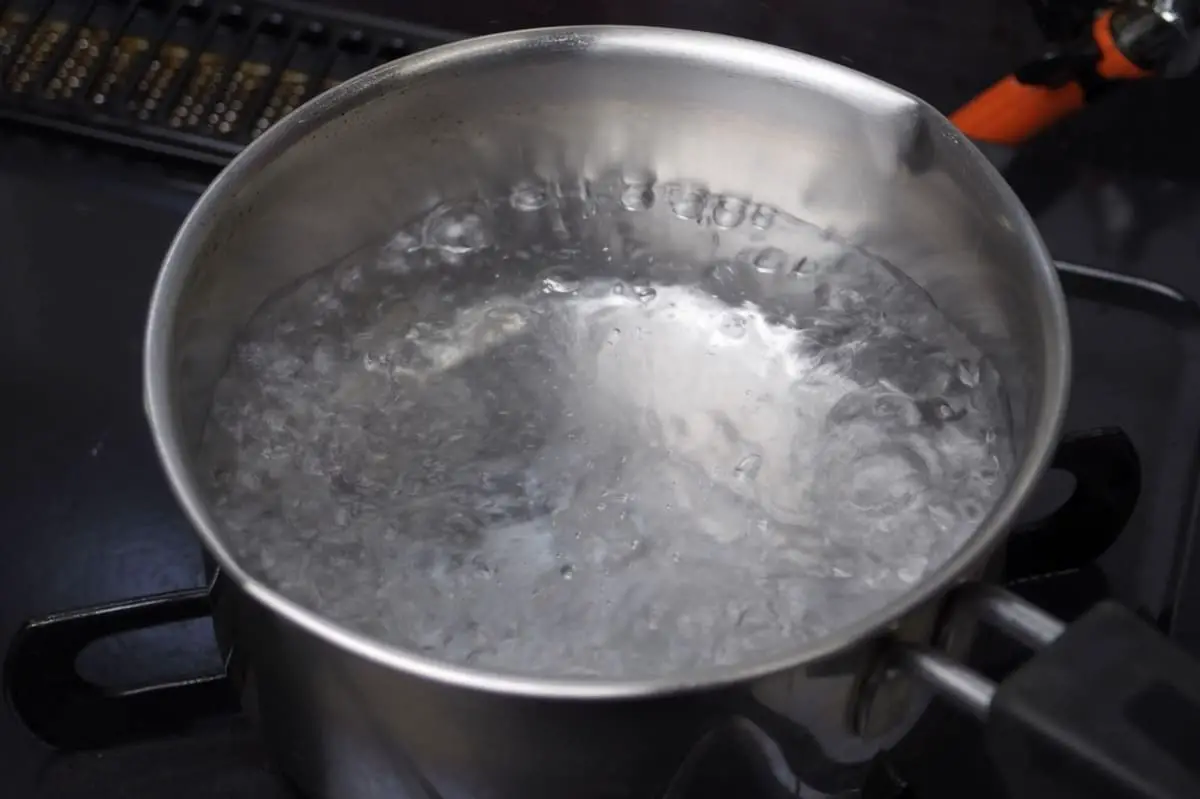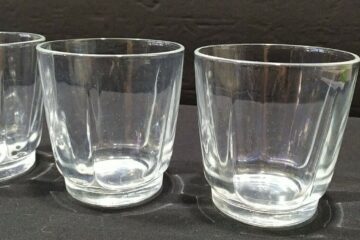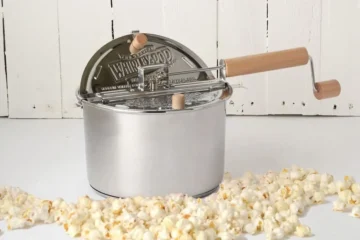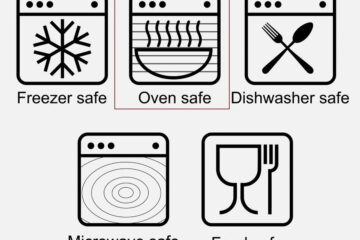Simmering is an essential cooking technique that requires precision and attention to detail. It’s the process of gently cooking food in a liquid kept just below boiling point. But what temperature is simmer? Well, that depends on the cooking scale you use.
In this essential guide, we will explore what temperature is simmer 1-10 and what temperature each of these numbers corresponds to. Whether a seasoned chef or a beginner cook, this guide will provide the information you need to master the art of simmering and cooking delicious, flavorful dishes to perfection. Get ready to elevate your cooking game!
What Is The Definition Of Simmer?
Simmer is a cooking term that refers to a gentle boiling process in which the temperature of the liquid is kept just below the boiling point. During simmering, small bubbles break the surface of the liquid and produce a constant, gentle movement.
The liquid is heated to a temperature between 180°F and 205°F, which allows food to cook slowly and evenly without excessive agitation. Simmering is commonly used in cooking sauces, soups, and stews and is an important cooking technique for preserving the flavor and tenderness of ingredients.
What Number Is Simmer?
Simmer is typically around 2 to 3 on an electric stove with 9 or 10 heat settings. Simmer is a low, gentle heat setting perfect for delicate dishes and sauces that need to cook slowly without boiling.
It’s important to keep an eye on the pot or pan when cooking on a simmer, as even a slight increase in heat can cause the contents to boil over. Simmering allows the flavors to develop and meld together, creating a rich and delicious dish.
What Temperature Is Simmer 1-10?
As we mentioned before, simmering refers to a cooking technique where a liquid is heated to a temperature just below boiling point, causing small bubbles to form and gently breaking the surface. The temperature range for simmering can vary depending on the recipe and the type of liquid being used. Still, it typically falls between 185°F to 205°F (85°C to 96°C).
On a scale of 1 to 10, where 1 is the lowest heat setting, and 10 is the highest, a simmer is typically around a 3 or 4. The key to successful simmering is maintaining a consistent, low temperature and avoiding boiling the liquid, which can cause it to become over-reduced or change its texture. To achieve a simmer, adjust the heat source as needed to maintain a gentle bubble and stir the liquid occasionally to prevent scorching.
How To Get Started With Simmering?
Getting started with simmering is a straightforward process. Here are the steps to follow:
Choose the right pot
A heavy-bottomed pot or saucepan with a tight-fitting lid is best for simmering, as it helps to distribute heat evenly and prevent scorching.
Prepare the ingredients
Choose the ingredients you want to simmer, such as vegetables, meats, broth, or sauce, and chop or dice them as needed.
Heat the liquid
Add the ingredients and liquid to the pot and place it on the stove over medium heat. Bring the liquid to a gentle boil, then reduce the heat to maintain a simmer.
Cover the pot
Place a lid on the pot to trap moisture and prevent evaporation. This also helps to control the temperature of the liquid and prevent boiling.
Adjust the heat
If the liquid starts to boil, reduce the heat. If it becomes too cool, increase the heat slightly. The goal is to maintain a gentle simmer with small bubbles just breaking the surface of the liquid.
Stir occasionally
Stir the liquid occasionally to prevent scorching and ensure that the ingredients cook evenly.
Simmer until desired tenderness
The time it takes for the ingredients to simmer will depend on the recipe and the type of ingredients being used. Simmer until the ingredients are cooked to your desired tenderness, checking and adjusting the heat as needed.
How To Select The Right Simmer?
Selecting the right simmer depends on the type of cooking you are doing and the desired outcome. Here are a few things to consider when selecting a simmer:
Heat source
Consider the type of stove you are using and its heat distribution, as well as the size and shape of the pot or pan you are using. A heavy-bottomed pot with a tight-fitting lid is ideal for simmering.
Recipe requirements
Consider the recipe you are using and its specific requirements for simmering. Some recipes may call for a low, gentle simmer, while others may require a higher heat to achieve the desired result.
Type of food
Consider the food you are cooking and its required cooking time. Some foods like meats and root vegetables may require a longer simmer time to achieve the desired tenderness. In contrast, others, such as delicate seafood or vegetables, may only need a short simmer to cook through.
Heat control
Choose a setting that allows you to maintain a consistent, low temperature and avoid boiling the liquid. You may need to adjust the heat during cooking to maintain the desired simmer.
How To Tell If Your Food Is Simmering?
To tell if your food is simmering, you should look for the following signs:
Small bubbles
A gentle simmer is characterized by small bubbles breaking the surface of the liquid but not rapidly boiling.
Consistent movement
The liquid should be in constant motion, with gentle bubbling but not rolling.
Steam
You should see steam rising from the surface of the liquid, indicating that heat is being transferred from the liquid to the air.
Temperature
The temperature of the liquid should be just below boiling point, typically between 185°F to 205°F (85°C to 96°C).
Lid movement
If the lid on your pot is fitted tightly, it should not move or rattle, but there should be some movement due to steam escape.
What Is Medium Low Heat 1-10?
On a scale of 1 to 10, where 1 is the lowest heat setting, and 10 is the highest, medium-low heat is typically around a 4 or 5. This setting provides moderate heat, which is suitable for various cooking techniques, such as sautéing, simmering, and slow cooking.
The food should cook gently in this heat setting, allowing flavors to develop and preventing burning or over-cooking. It is important to adjust the heat as needed and to stir or flip the food frequently to ensure even cooking.
In general, medium-low heat is a good starting point for many cooking techniques. You can adjust the heat as needed to achieve the desired result. Whether making a simple sauce, a hearty stew, or a delicate dish, a medium-low heat setting is a versatile choice for your cooking needs.
What Number Is Low Simmer On Stove?
The exact number for a low simmer on a stove can vary depending on the specific stove and heat settings. However, on most stoves, a low simmer is achieved at a heat setting between 1 and 3, with 1 being the lowest heat and 3 being the highest low heat.
What Temperature Is Simmer On Electric Stove?
The temperature for simmering on an electric stove can range between 185°F to 205°F (85°C to 96°C). A gentle simmer is characterized by small bubbles forming on the surface of the liquid but not rapidly boiling. The temperature should be low enough to prevent the liquid from boiling but high enough to cook the food evenly and prevent it from becoming overcooked or mushy.
What Number Is Simmer On A Gas Stove?
The exact number for a simmer on a gas stove can vary depending on the specific stove and heat settings. However, on most gas stoves, a low simmer is achieved at a heat setting between 1 and 3, with 1 being the lowest heat and 3 being the highest low heat.
What Number Is Simmer On Electric Stove 1-9?
The exact number for a simmer on an electric stove can vary depending on the specific stove and heat settings. However, on most electric stoves, a low simmer is achieved at a heat setting between 2 and 4, with 1 being the lowest heat and 9 being the highest heat.
- Is Simmer Lower Than Low? (An Essential Guide By Experts)
- What Is Low Heat On A Stove? (Myths And Reality)
What Temperature Is Simmer 1-6?
Simmer 1-6 is the temperature at which water will simmer. Simmer 1 is the lowest temperature you can safely boil water, and Simmer 6 is the highest temperature at which you can safely boil water.
What Number Is Simmer On Electric Stove 1-8?
Simmer is a heat setting on the electric stove that can go from 1 to 8. When you turn the knob to 2, it’s on low heat. At 3, it’s medium heat. At 4 and 5, it’s high heat. And at 6 and 7, it’s extra high heat.
What Temperature Is Simmer In Celsius?
A simmer in Celsius is typically between 85°C to 96°C. This temperature range is just below the boiling point of water (100°C). It is used for gentle cooking techniques such as simmering, poaching, or poaching foods gently in a flavorful liquid.
The key to successful simmering is maintaining a consistent temperature that is low enough to prevent the liquid from boiling but high enough to cook the food evenly and prevent it from becoming overcooked or mushy.
The Final Words
Hopefully, this guide has given you a better understanding of What Temperature Is Simmer 1-10, how to use your simmer setting, and the different benefits of each temperature level. We highly recommend that beginners start with a gentle simmer, use the bag-boiling method, and slowly work up to higher temperatures if desired and as they become more comfortable using their pressure cooker.
Frequently Asked Questions
What Heat Setting Is Simmer?
Simmer is a low heat setting on a stove that maintains a gentle bubbling in the pot or pan. The temperature of a simmer is around 185-205°F.
What Number Is A Simmer On A Stove?
A simmer on a stove is typically around 2 to 3. It is a low, gentle heat used for cooking liquids slowly.
Is Simmer Low Or Medium Heat?
Simmering is typically done on medium-low heat. The heat should be low enough to create gentle bubbles but not so low that the liquid stops moving.
What Is Medium Heat On A 1/10 Stove?
Medium heat on a 1/10 stove is around a 5/10 setting. It is a medium-high flame intensity, suitable for cooking and sautéing dishes.



